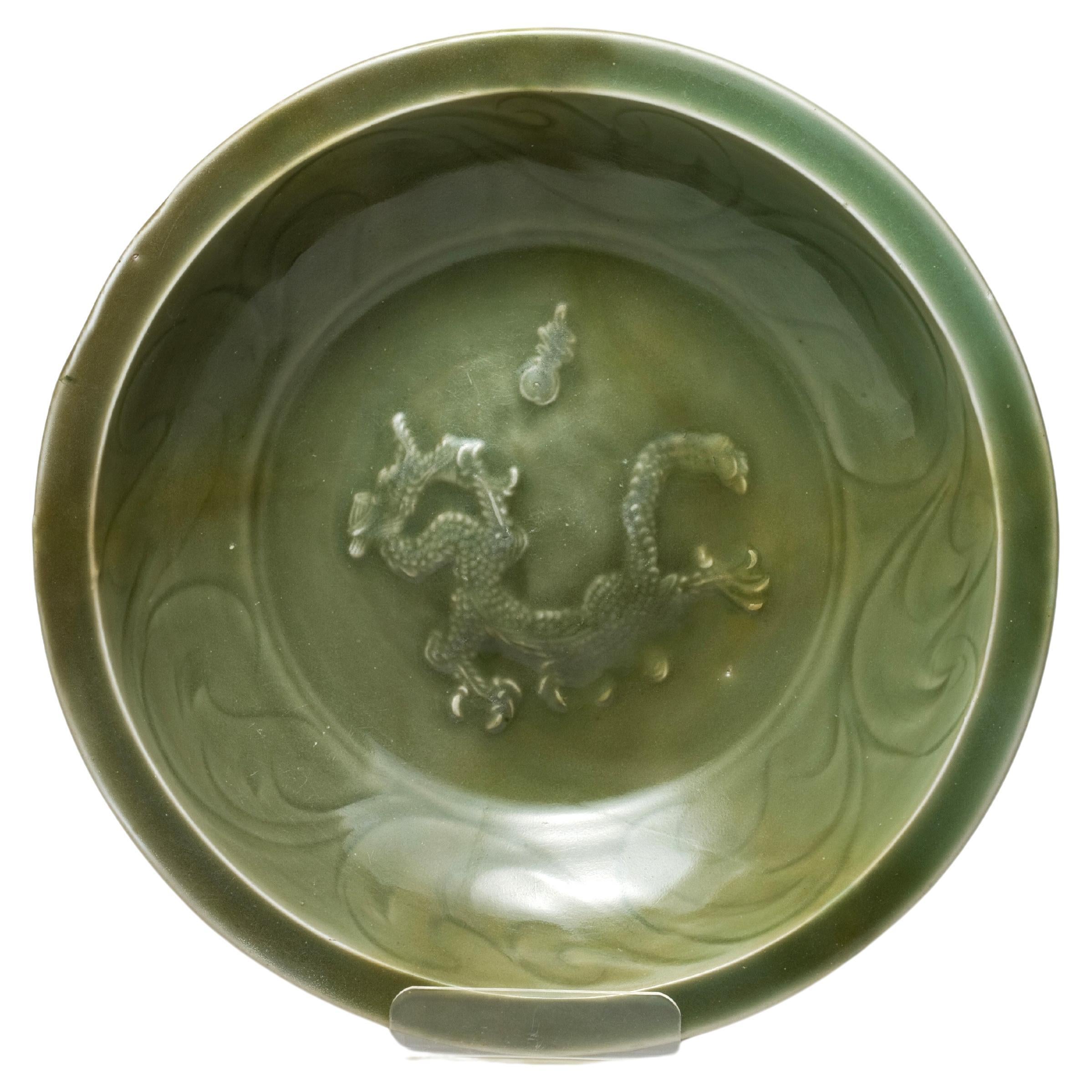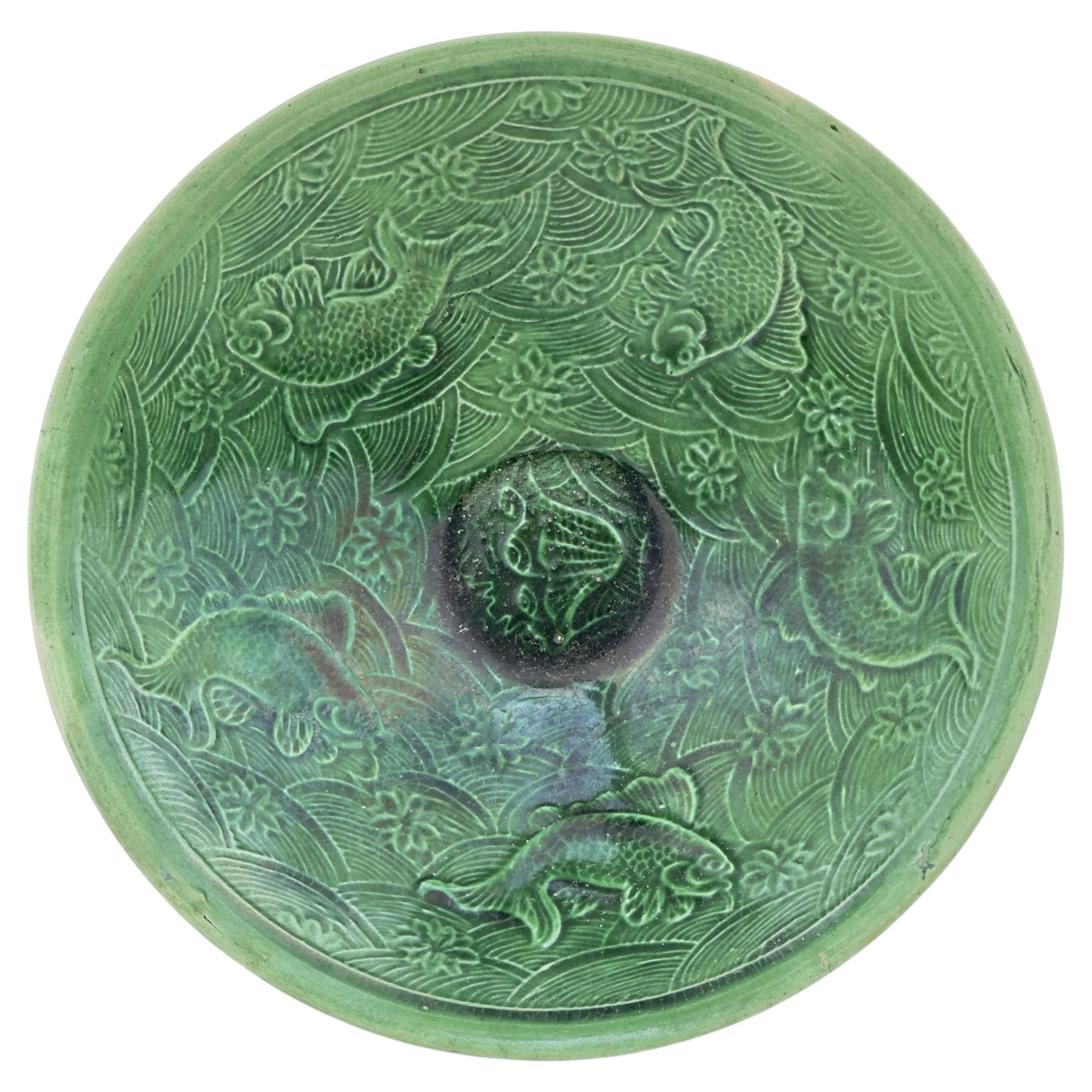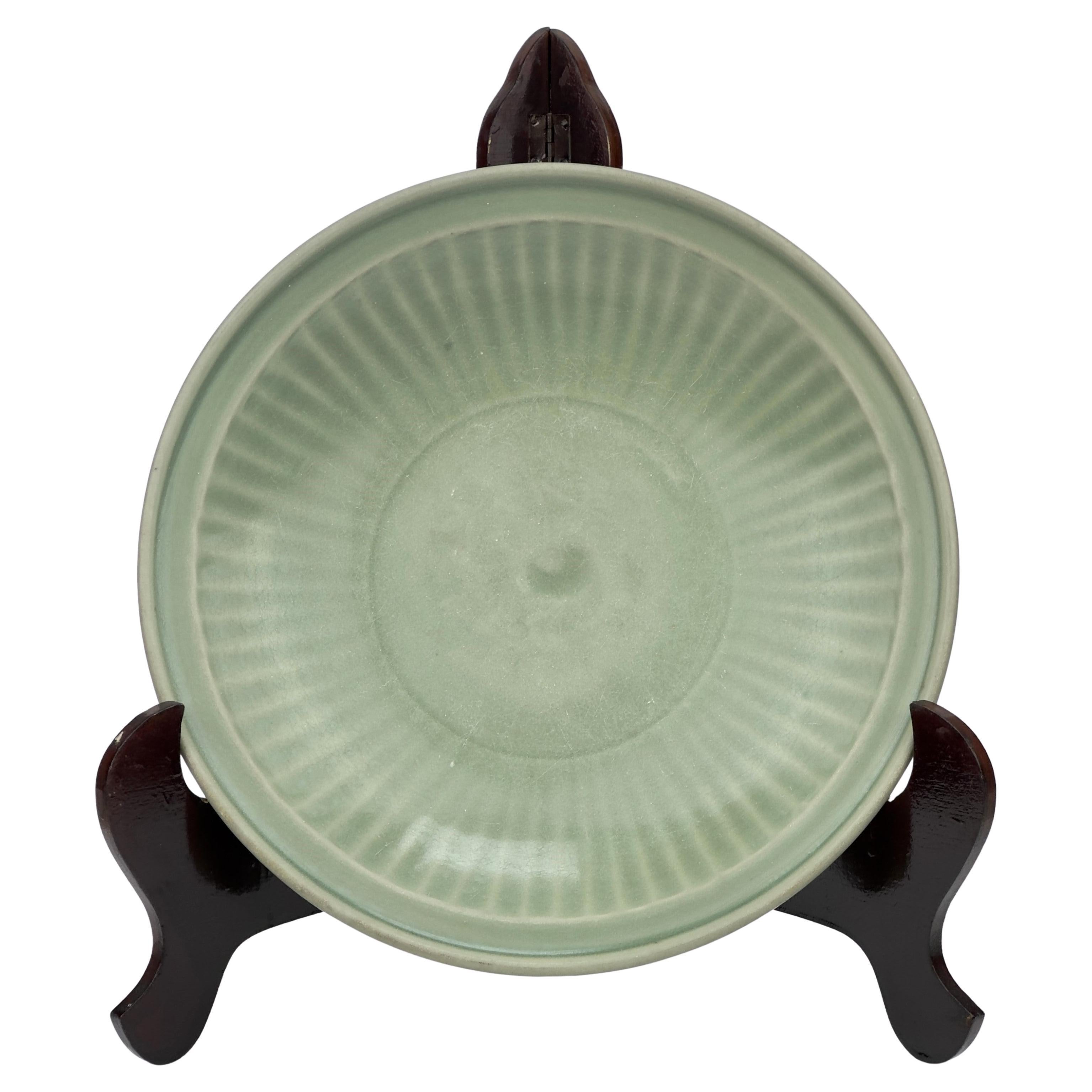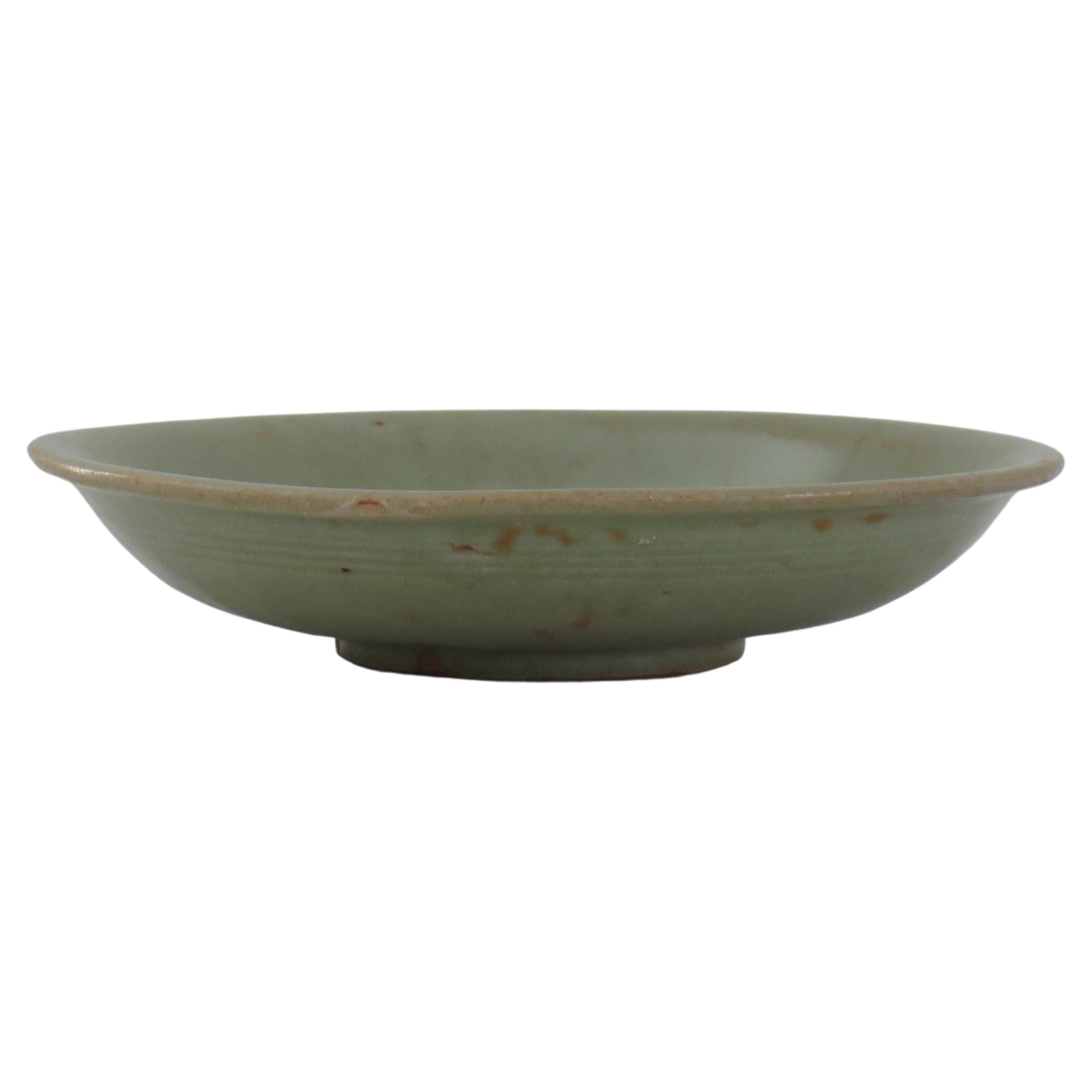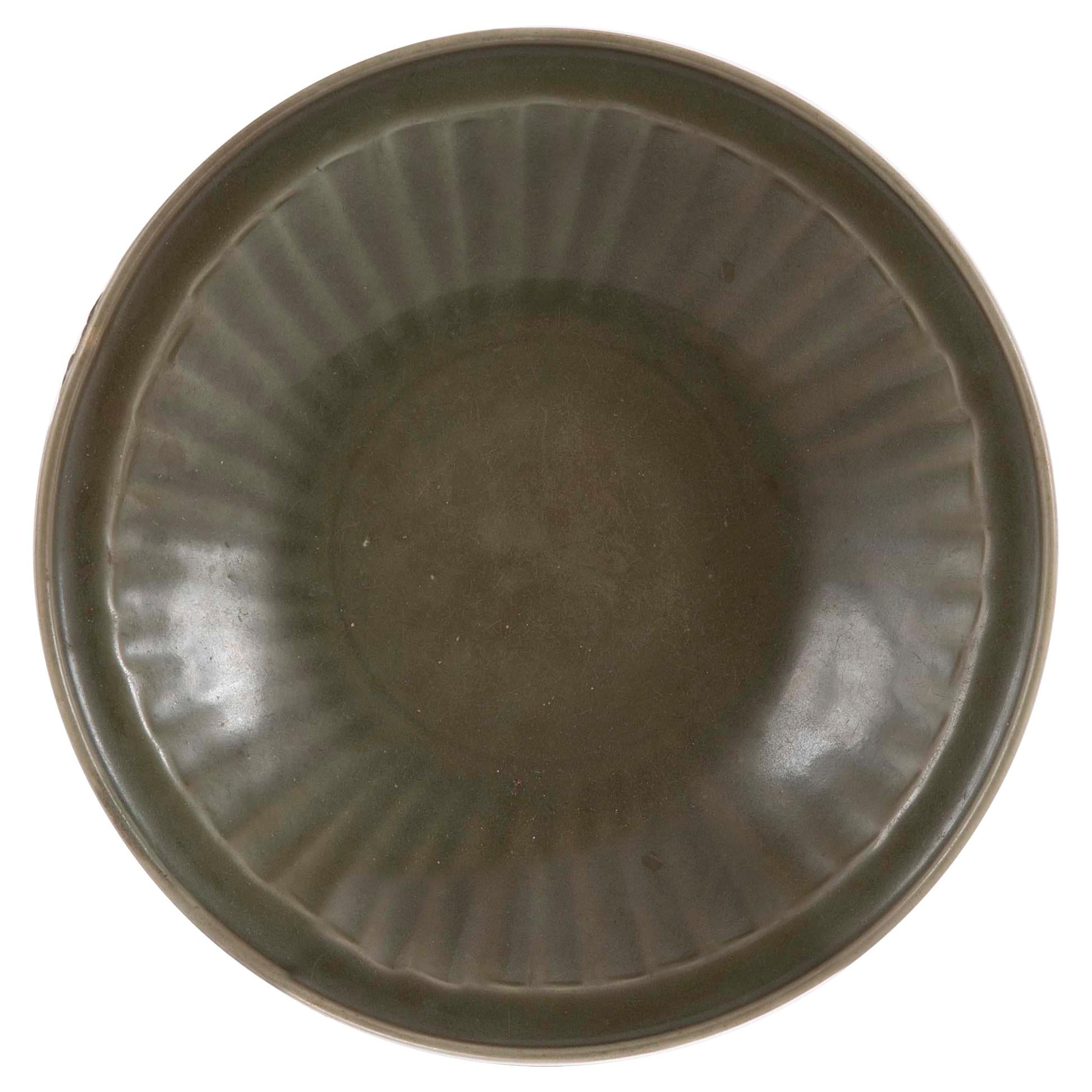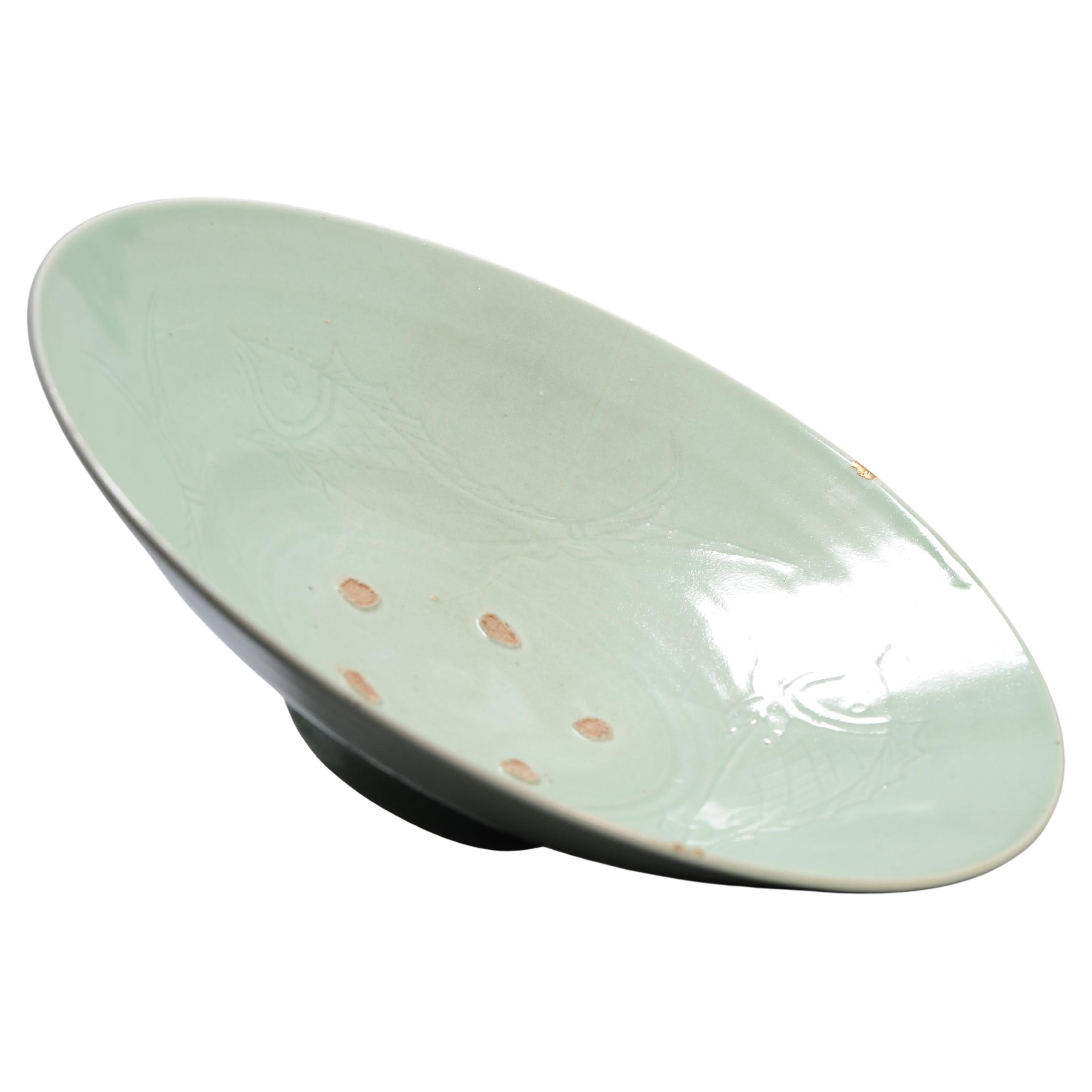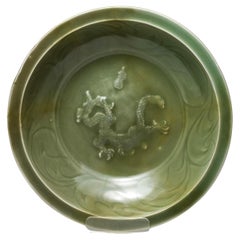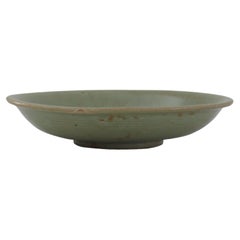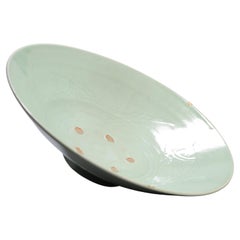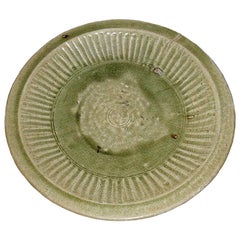Items Similar to Small Longquan Celadon 'Twin Fish' Dish, Southern Song Dynasty
Want more images or videos?
Request additional images or videos from the seller
1 of 17
Small Longquan Celadon 'Twin Fish' Dish, Southern Song Dynasty
$3,244
$4,99034% Off
£2,451.38
£3,770.7834% Off
€2,830.75
€4,354.3234% Off
CA$4,533
CA$6,972.7734% Off
A$5,029.75
A$7,736.8834% Off
CHF 2,634.69
CHF 4,052.7434% Off
MX$61,678.18
MX$94,874.8934% Off
NOK 33,512.34
NOK 51,549.4934% Off
SEK 31,634.22
SEK 48,660.5234% Off
DKK 21,110.65
DKK 32,472.9234% Off
Shipping
Retrieving quote...The 1stDibs Promise:
Authenticity Guarantee,
Money-Back Guarantee,
24-Hour Cancellation
About the Item
The "twin fish" dishes, emblematic of fertility and marital joy, are also recognized as one of the Eight Buddhist symbols. These dishes were prominently produced by the Longquan kilns during the transition from the late Southern Song to the early Ming period. Such dishes have been found in the Longquan area's Southern Song kiln sites, for example, the bowl discovered at Jincun, which is depicted in "Longquan Qingci Yanjiu". Additional specimens can be found in major collections, including the National Palace Museum in Taipei, as detailed in the "Illustrated Catalogue of Sung Dynasty Porcelain in the National Palace Museum: Lung-chu'än Ware, Ko Ware and other Wares", and at the Percival David Foundation, documented in "Illustrated Catalogue of Celadon Wares"
Period : Southern Song Dynasty - Yuan Dynasty
Type : Celadon
Medium : Longquan ware
Size : 4.5 cm(Height) 21cm(Diameter)
Condition : Good(A brown discoloration, characteristic of aged celadon and commonly seen in excavated pieces, has been observed on the back of the celadon over a long period.)
Provenance : Acquired in early 2000s from Japan
Reference :
1) Sotheby's Paris 18 April 2023 - Asian Arts / 5000 Years - lot137
(Price : 44,450 Euro / Type : Closely related)
2) Christies Newyork 21–22 SEP 2023 - Important Chinese Ceramics and Works of Art - lot 1017
(Price : 9,450 USD / Type : Closely related)
* Song Dynasty Longquan Celadon
Longquan celadon refers to a type of Chinese ceramic that was famous for its distinctive glaze and high-quality craftsmanship, primarily produced during the Song Dynasty (960–1279 AD). These ceramics were made in the Longquan region of the Zhejiang province in eastern China, an area rich in the clay and mineral resources necessary for ceramic production.
The most notable characteristic of Longquan celadon is its glaze, which ranges in color from a pale blue-green to a deep olive green. This unique color comes from the iron oxide in the glaze, which, when fired in a reducing kiln atmosphere, produces the green hue. The thickness of the glaze, as well as the firing conditions, could affect the final shade and appearance of the celadon, with some pieces exhibiting a more crackled texture and others a smoother, glossier finish.
Longquan celadons were highly prized for their beauty and durability, making them popular both domestically within China and internationally. They were exported widely, reaching as far as Southeast Asia, the Middle East, and Africa, where they were often considered luxury items and treasured by various cultures.
The designs of Longquan celadon wares varied from simple and elegant forms to more elaborate decorations, including carved or incised motifs inspired by nature, such as lotus flowers, phoenixes, dragons, and foliage. Despite the variations in decoration, the emphasis was always on the harmony between form, glaze, and decoration, with the glaze playing a crucial role in enhancing the overall aesthetic appeal of the piece.
During the Song Dynasty, Longquan celadon was one of several major types of ceramics produced in China, each with its own distinctive characteristics. However, the quality and beauty of Longquan celadon made it one of the era's most celebrated ceramic types, and it continues to be highly valued by collectors and scholars today.
- Dimensions:Height: 1.78 in (4.5 cm)Diameter: 8.27 in (21 cm)
- Materials and Techniques:Celadon,Glazed
- Place of Origin:
- Period:
- Date of Manufacture:960-1368
- Condition:Minor fading. There are traces of excavation (brown discoloration) commonly found on celadon on the back side.
- Seller Location:seoul, KR
- Reference Number:1stDibs: LU9577239246302
About the Seller
4.8
Gold Seller
Premium sellers maintaining a 4.3+ rating and 24-hour response times
Established in 1999
1stDibs seller since 2023
38 sales on 1stDibs
Typical response time: 1 hour
- ShippingRetrieving quote...Shipping from: seoul, Korea South
- Return Policy
Authenticity Guarantee
In the unlikely event there’s an issue with an item’s authenticity, contact us within 1 year for a full refund. DetailsMoney-Back Guarantee
If your item is not as described, is damaged in transit, or does not arrive, contact us within 7 days for a full refund. Details24-Hour Cancellation
You have a 24-hour grace period in which to reconsider your purchase, with no questions asked.Vetted Professional Sellers
Our world-class sellers must adhere to strict standards for service and quality, maintaining the integrity of our listings.Price-Match Guarantee
If you find that a seller listed the same item for a lower price elsewhere, we’ll match it.Trusted Global Delivery
Our best-in-class carrier network provides specialized shipping options worldwide, including custom delivery.More From This Seller
View AllA Longquan Celadon-Glazed 'Dragon' Dish, Yuan Dynasty
Located in seoul, KR
The dish is decorated to the centre with a moulded appliqué dragon chasing the flaming pearl surrounded by a carved stylised foliage band at the cavetto. The moulded fluted exterior ...
Category
Antique 15th Century and Earlier Hong Kong Ming Antiquities
Materials
Celadon
$5,925 Sale Price
25% Off
Rare Green-Glazed 'Fishes and Wave' Bowl, Liao-Song Dynasty
Located in seoul, KR
This green-glazed bowl was finely crafted with an attention to detail that highlights the skill of the Cizhou green and Ding ware. Its delicate form has been adorned with a fishes an...
Category
Antique 15th Century and Earlier Hong Kong Antiquities
Materials
Ceramic, Stoneware
$9,900 Sale Price
50% Off
A Large 'Longquan' Celadon Dish, Ming Dynasty, 15th century
Located in seoul, KR
The heavily potted dish is molded in the central roundel below the fluted cavetto and the everted rim with lipped edge, and is covered overall with a glaze of sea-green color, except for the unglazed ring on the base. The wood stand is not included with the item.
Period: Ming Dynasty (1368~1644)
Region: Longquan, China
Medium: Celadon
Type: Dish
Provenance : Acquired in late 1990s from Hongkong
Reference :
1) Christies NEW YORK 22–23 MAR 2018 - Fine Chinese Ceramics and Works of Art - Lot 722
2) Sotheby's Paris 11 December 2020 - Arts d'Asie - Lot 8
(Price realised : 4,032 EUR / Type : Closely related)
3) Christies LONDON 21–28 MAY 2020 - The Art of China - Lot 31
(Price realised : 5,250 GBP / Type : Closely related)
* Ming Dynasty Longquan Celadon
Longquan celadon from the Ming Dynasty typically exhibits a more robust and heavier stoneware body compared to its Song Dynasty predecessors. The Ming era saw an evolution in celadon glaze, achieving a wider spectrum of green hues, from olive to bluish-greens. Ming celadons...
Category
Antique 15th Century and Earlier Hong Kong Ming Decorative Dishes and Vi...
Materials
Celadon
$3,594 Sale Price
40% Off
Small Celadon Chrysanthemum Dish, Northern Song Dynasty(AD 960~1127)
Located in seoul, KR
Potted with the fluted sides rising from a recessed base, carved to the interior with Chrysanthemum, covered overall with a grayish-green glaze, save for a ring to the underside left unglazed to reveal the gray stoneware...
Category
Antique 15th Century and Earlier Hong Kong Ming Antiquities
Materials
Celadon
$3,185 Sale Price
35% Off
Celadon Bowl with Incised Lotus Patterns, Song Dynasty
Located in seoul, KR
Beneath the soft grayish-green glaze, incised lotus design emerges. The surface is adorned with flowing lines depicting lotus flowers and leaves, rendered in a refined carving techni...
Category
Antique 15th Century and Earlier East Asian Antiquities
Materials
Celadon
$1,050 Sale Price
30% Off
A Rare Dingyao Green-Glazed Dragon Dish, Liao-Song Dynasty
Located in seoul, KR
This green-glazed bowl was finely crafted with an attention to detail that highlights the skill of the Cizhou green and Ding ware potter. Its delicate form has been adorned with a dr...
Category
Antique 15th Century and Earlier Hong Kong Ming Antiquities
Materials
Ceramic, Stoneware
$12,935 Sale Price
35% Off
You May Also Like
Chinese Stoneware Bowl or Dish Longquan Celadon Incised, Yuan Dynasty 1271-1368
Located in Lincoln, Lincolnshire
This is a very old interesting Chinese stoneware Longquan Celadon bowl or plate with incised decoration, which we date to the Yuan Dynasty, circa 1300.
The bowl is well potted on a low foot.
The bowl is an olive green colour having a celadon glaze with incised decoration to its centre of what looks like a flower stem and additionally three incised string lines to the outer wall. Unglazed parts fire to a terracotta brown colour as with the base section
The piece is unmarked but for similar pieces see the superb book: Chinese Ceramics by He Li published by Thames & Hudson, 1996; pages 164 to 184.
NOTES
Longquan is a city in South west China. These wares were produced over a long time period from 959 to 1550; which covers the Northern Song, Southern Song...
Category
Antique 15th Century and Earlier Chinese Other Ceramics
Materials
Stoneware
Ming Dynasty Celadon Glazed Charger
Located in Stamford, CT
Ming dynasty celadon glazed charger having fluted interior with plain well center.
Category
Antique Mid-17th Century Chinese Ming Ceramics
Materials
Ceramic
Rare Antique Edo period Japan Japanese Porcelain Celadon Plate Arita Dish
Located in Amsterdam, Noord Holland
Sharing with you this very nice edo period example with carved fish design.
Storage Box included
Unmarked at base
Arita ware, also known as Arita-yaki, has its origins in 1616, whe...
Category
Antique 17th Century Edo Decorative Dishes and Vide-Poche
Materials
Porcelain
$3,885 Sale Price
20% Off
Thai Celadon Plate, 15th Century
Located in New York, NY
A rare celadon plate from the kilns of Sangkhalok, one of the main centers of Thai ceramics during the Sukhotai period (1230-1438)
Well preserved for i...
Category
Antique 15th Century and Earlier Thai Other Decorative Dishes and Vide-P...
Materials
Celadon
$1,370 Sale Price
30% Off
Old or Antique Celadon Chinese Porcelain Low Bowl with Clouds
Located in Philadelphia, PA
A fine antique Chinese celadon porcelain bowl.
With white accents & highlights against a pale green celadon body.
The bowl has a slightly scalloped rim with a white border.
The p...
Category
20th Century Chinese Chinese Export Ceramics
Materials
Porcelain
Little Chinese Celadon Ming Plates
Located in Alessandria, Piemonte
Little Chinese Celadon plates from my private collection, about 35 yars ago and never exhibited to the public.
The sizes published are for the b...
Category
Antique 17th Century Chinese Other Ceramics
Materials
Porcelain
$953 / set
More Ways To Browse
Antique Southern Furniture
Small Antique Dish
Celadon And Blue
Song Dynasty
Chinese Song Dynasty
Song Dynasty Furniture
Antique Twin Bedroom Furniture
Dynasty Bowl
Song Porcelain
Song Dynasty Ceramics
Chinese Ceramics Song Dynasty
Green Dishes Antique
Ming Dynasty Bedroom Furniture
Paris Ware
Song Dynasty Porcelain
Antique Ceramic Fish
Green Fish Ceramic
Paris Porcelain Basket
